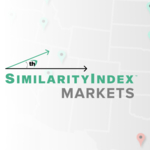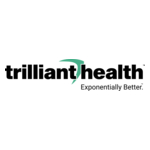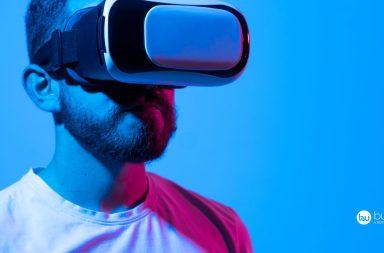Applying machine learning to the healthcare industry’s most robust data sources, SimilarityIndex™ | Markets is an application that allows healthcare organizations to understand which U.S. markets are most similar, determining relevant growth, economic, demographic, consumer, and competition peers to power evidence-based strategies.
The SimilarityIndex™ is a new set of benchmarks generated from the health economy’s first machine-learning-based SimilarityEngine™
NASHVILLE, Tenn.–(BUSINESS WIRE)–#digitalhealth—Trilliant Health, the leading provider of predictive analytics and market research in the healthcare industry, today introduced SimilarityIndex™, a new set of benchmarks generated from the health economy’s first machine-learning-based SimilarityEngine™ that enables healthcare organizations to analyze and compare the similarity of U.S. markets, facilities, physicians, and patients across any number of user-selected features. Since healthcare is local, the first application released from the company is SimilarityIndex™ | Markets.
Trilliant Health’s SimilarityIndex™ | Markets enables healthcare organizations to develop evidence-based strategies by identifying actual market peers, while also allowing them to benchmark against the relevant competitive leaders in the relevant markets. Historically, healthcare executives have compared their organizations against aspirational competitors or those that rank highly in well-known lists such as U.S. News World Report and IBM Watson Health. In contrast, Trilliant Health’s machine learning and similarity modeling enables every healthcare stakeholder to benchmark accurately by identifying the most similar markets, facilities, providers, and patient populations.
“For decades, healthcare organizations, especially health systems and hospitals, have used incomplete and irrelevant benchmarks. In a time of unprecedented upheaval in the health economy, executives should reframe their thinking about strategy when considering new markets, M&A, service line expansion, and more. While healthcare veterans are fond of noting that ‘all healthcare is local,’ they usually compare themselves nationally to supposed peers operating in radically dissimilar environments, resulting in suboptimal decision making and capital allocation,” said Hal Andrews, President and CEO of Trilliant Health. “Not every health system can be like Mayo Clinic or Intermountain Healthcare or Geisinger; in fact, none of them can be, for many different reasons. As a result, all health economy stakeholders should analyze and understand market similarities by applying the same mathematical rigor and algorithmic intelligence used by technology leaders in other industries to determine which market characteristics are most alike. You cannot fix a bad market, so understanding which markets are which is foundational to evidence-based strategy.”
SimilarityIndex™ | Markets leverages the healthcare industry’s most robust data sources, including Trilliant Health’s proprietary all-payer claims database representing more than 320 million Americans, provider directory, and proprietary demand forecast methodology. The SimilarityEngine™ determines the most similar markets, or metropolitan U.S. core-based statistical areas (CBSAs), by the following SimilarityIndex™ categories:
- Growth Similarity: Analyzes five-year projected population growth and excess mortality per capita.
- Economic Similarity: Analyzes data pertaining to estimated household income, debt, home values and discretionary income.
- Demographic Similarity: Analyzes population-level data on health insurance status, age and sex, generational distribution, race/ethnicity, and primary language.
- Consumer Similarity: Analyzes psychographic profiles, use of wearables, and prescription use and drug adherence.
- Competitive Similarity: Analyzes a more representative measure of market concentration (Herfindahl-Hirschman Index) using inpatient surgery, outpatient surgery and inpatient medical volumes.
- Aggregate: Combines all of the above features to show the markets most similar to a selected CBSA.
The SimilarityIndex™ | Markets is backed by Trilliant Health’s data science, data engineering, and health services research experts with unmatched insight into the macro and micro trends impacting the new health economy. Trilliant Health leverages the SimilarityEngine™ to create custom research to analyze hyper-local supply and demand, which helps healthcare organizations understand how similar markets may vary across specific healthcare metrics (e.g., rate of diabetes, projected surgical demand, primary care and behavioral health provider supply).
“Each stakeholder in the new health economy is under tremendous pressure, especially as we enter a new period of economic uncertainty. Every stakeholder, whether a health system, health insurer, medical device manufacturer, digital health provider, or pharmaceutical company, faces unique threats from significant shifts in patient populations and disease burden to competition from nontraditional market entrants–all at a time when demand for healthcare services has remained relatively flat,” said Trilliant Health Chief Research Officer and SVP of Market Strategy, Sanjula Jain, Ph.D. “While markets can be characteristically similar, they can have vastly different healthcare demand and supply, which is why combining the SimilarityIndex™ with our custom research and demand forecasting capabilities gives unique insight to create evidence-based strategies that account for inter-market differences.”
To support the launch of SimilarityIndex™ | Markets, Trilliant Health has made a free, web-based SimilarityIndex™ tool publicly available to healthcare organizations to see how their markets compare to other markets. The tool allows a user to identify the ten most and least similar metropolitan CBSAs (by Similarity Score) to the selected benchmark market, displaying similar markets in table and map views.
For a greater understanding of the SimilarityEngine™ and SimilarityIndex™, Trilliant Health produced its SimilarityIndex | Markets Report that includes detailed explanations of the selected market features per SimilarityIndex™ category with specific market examples, as well as scoring and methodology. In the future, Trilliant Health will release findings from applying its SimilarityEngine™ model to facilities, physicians and patient populations.
About Trilliant Health
Trilliant Health combines healthcare industry expertise, market research, and predictive analytics to form Evidence-Based Strategy for Healthcare™. Trilliant Health’s proprietary analytics platform produces a comprehensive understanding of local market dynamics providing exponentially better data insights to maximize returns from growth strategies. For more information, please visit trillianthealth.com.
Contacts
Maggie Jackson (media@trillianthealth.com) / 615.397.0579




